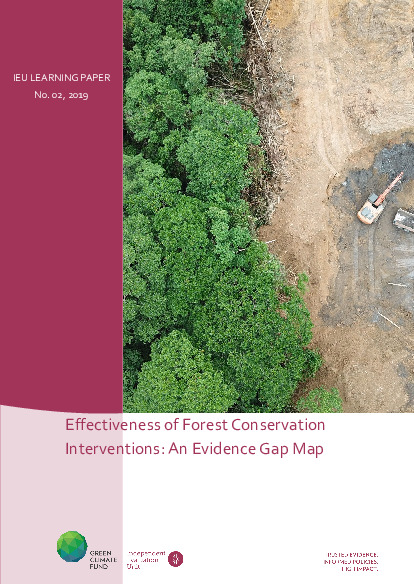Effectiveness of Forest Conservation Interventions: an Evidence Gap Map
This paper presents an evidence gap map of forest conservation interventions in low- and middle-income countries based on evidence published over the period 2016 to mid-2018. It serves as an update to a similar effort by 3ie, with refinements to the framework that distributes studies across three tiers based on quality and considers environmental and socioeconomic outcomes.
Compared to the previous evidence gap map, the evaluation of forest conservation outcomes has clearly accelerated in recent years, but from a modest base: the body of evidence still remains insufficient across most intervention types. Community-based management (especially in South Asia) and protected areas are well represented, though the latter distinguishes few subcategories. In turn, both PES and REDD+ evaluations are less available, and the latter surprisingly features more welfare than forest conservation or carbon impacts. Capacity-building interventions are almost absent in the matrix. It is also notable that policy mixes, often dominant in real-world implementation, have so far received little scrutiny. Among forest types, conservation interventions in mangroves lag behind, despite their environmental importance. Geographically, Asia and Latin America generally publish much more evaluated evidence than Africa.
In conclusion, despite the incipient progress we have undoubtedly seen, many important knowledge gaps still remain.
- Executive summary
- Introduction
- Guiding principles
- Framework, search protocol and data extraction
- Results
- References
- Annexes
